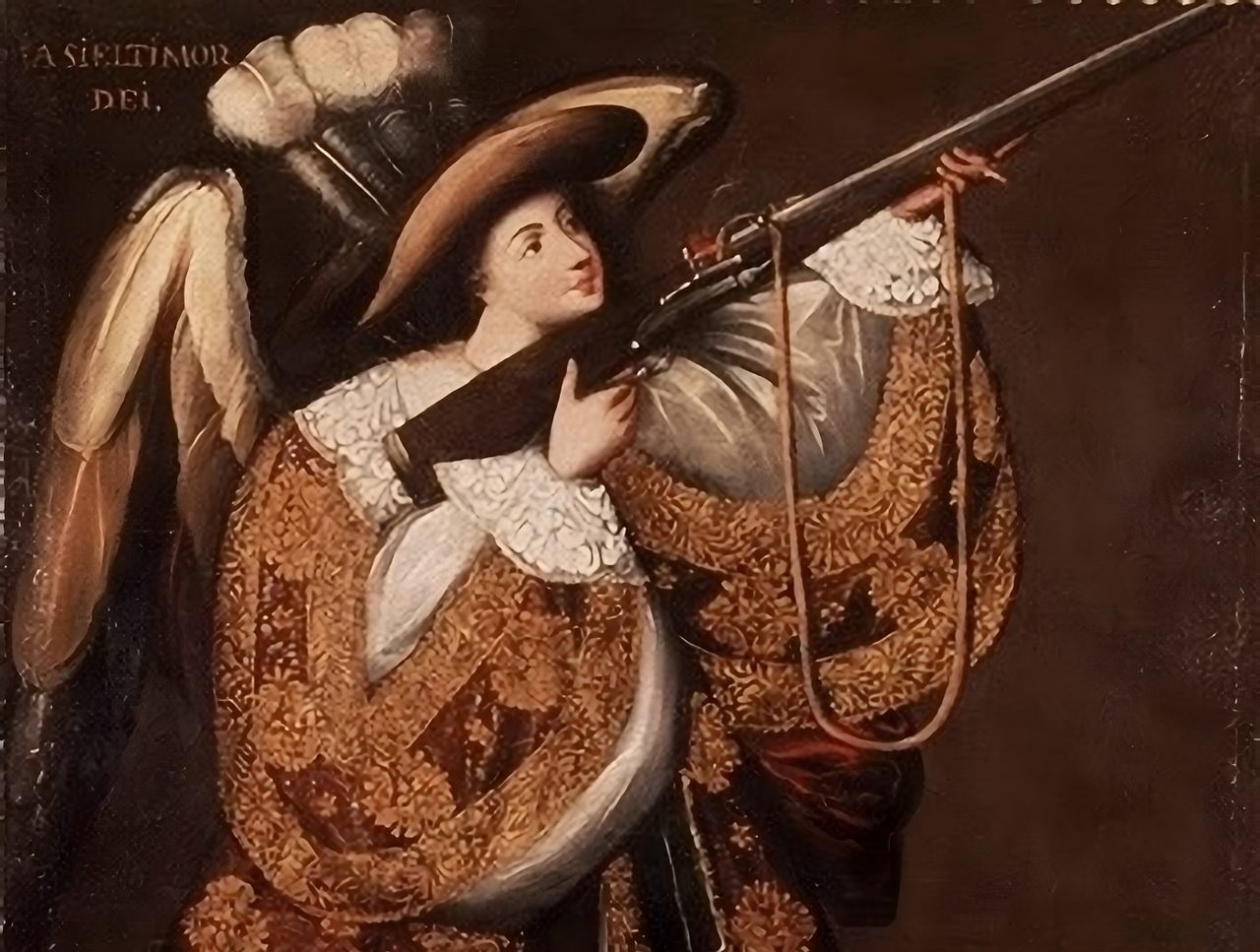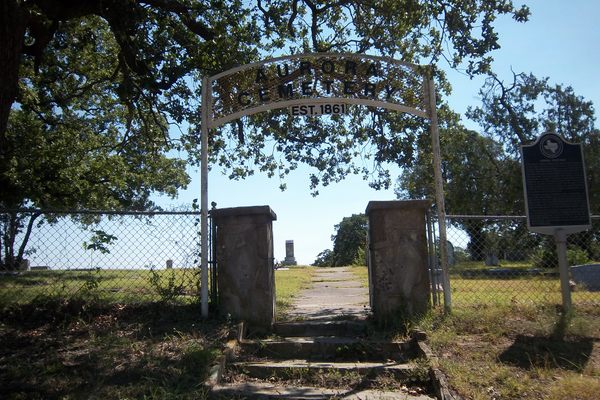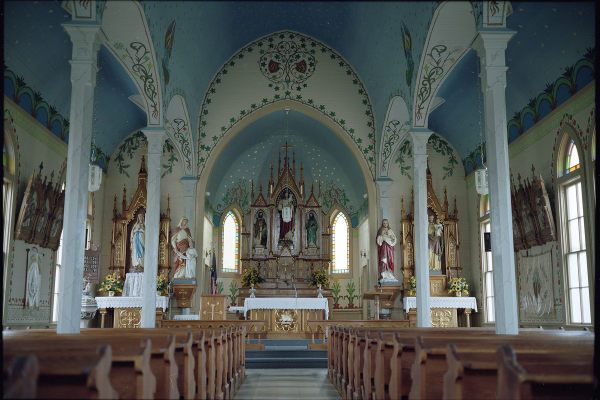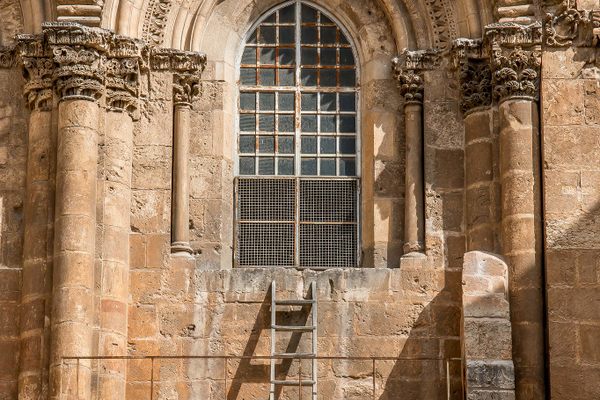Decoding the Gun-Wielding Angels of Bolivia
The ‘angeles arcabuceros’ morphed from Catholic messengers to symbols of Indigenous independence.
Set in the arid high plain about an hour and a half south of La Paz, Bolivia, the town of Calamarca is in many ways a typical colonial settlement, a grid of houses and shops centered around a circa 1600 Baroque church that overlooks a small plaza. Inside this church, however, a remarkable gathering of angels has made the town a destination.
Dressed in lace, feathers, and gold brocade—finery that resembled that of the Indigenous elites who administered Spanish colonial rule—these celestial beings are androgynous, posing like dancers with their wings discretely held behind them. What startles the viewer is that they are also bristling with weaponry: Each is armed with a musket—specifically, an arquebus, a common infantry gun of the 16th century—and looks prepared to use it.
“The angeles arcabuceros do not fail to stop people in their tracks,” says Gauvin Bailey, a professor of art history at Ontario’s Queen’s University and the author of a 2010 survey, The Andean Hybrid Baroque: Convergent Cultures in the Churches of Colonial Peru.
Angels are, of course, a common theme in Catholic art. They often carry symbolic objects, such as books, banners, or musical instruments (think of the Archangel Gabriel with his horn), and sometimes they are even equipped for battle—Saint Michael often carries a sword and shield. Outside this part of South America, however, spiritual warriors with firearms are unheard of. “They are a really unique art form,” says Bailey.
Muskets are not the only thing that makes the angeles arcabuceros special. Originating in the second half of the 17th century in the area around Lake Titicaca, which spans the border between modern-day Peru and Bolivia, the gun-toting angels carry hidden Indigenous meanings. Although putatively Christian, the angeles arcabuceros also hint at deeper layers of Andean spirituality.
“Scholars have linked the angeles arcabuceros to ancient Andean star and planetary venerations, as well as to natural phenomena such as hail, thunderstorms, and earthquakes,” Bailey says, noting possible connections to the local god of fire and lightning, Tunupa, among other deities. “People of the time certainly did continue to worship Indigenous deities—as they continue to do today.”
The parallels were no accident—as in other places where Christian missionaries worked to convert a populace, evangelizing priests in the Andes used syncretism, a strategy of incorporating pre-existing beliefs into a new religion. They made connections wherever they could between biblical figures and Indigenous beliefs. Given the breadth of the Andean pantheon, angels may have acted as useful replacements for Indigenous deities.
At the same time, angels could also be seen as ruthlessly expelling pagan superstitions when depicted as spiritual warriors. “The angeles arcabuceros may consequently have referred to the militant church assuming spiritual control of the region,” wrote art historian Kelly Donahue-Wallace, in her 2008 survey, Art and Architecture of Viceregal Latin America, 1521-1821.
In short, the gun-toting angel was a multifaceted metaphor. “It undoubtedly also reflected the Catholic Counter-Reformation militaristic rhetoric,” wrote Donahue-Wallace, “which promoted the church as an army and heavenly beings as its soldiers.”

Regardless of the largely anonymous artists’ motives or priests’ intentions in commissioning these works, the angels were an immediate and lasting hit with the Andean people. The depictions soon spread throughout the region—although the angel musketeers proved too peculiar, or too particular, for export to Europe.
“They owed their popularity in the Andes to their indigeneity, their relationship to Andean beliefs and culture,” Bailey says. “The Church was never completely comfortable with them.”
The armed angels did, however, continue their rein in Bolivia and Peru, where artists continued painting them for nearly 300 years, all the while remaining faithful to the original style of dress. (The angels also retained their 17th-century weaponry, which scholars believe was inspired by Dutch engravings of military exercises that may have circulated among the original artists and their students.)
In the 18th century, angeles arcabuceros even became associated with Indigenous independence movements, says Bailey. “In a case of life imitating art, participants dressed as angels in a religious parade in Lima in 1750 carried loaded weapons and used them to begin an armed uprising!”

Today, the people of the region defend their angels just as fiercely. At Calamarca, a society of parish members was formed in 1913 to protect the artwork from looters. Anyone wishing to visit the church, known as the Templo de Calamarca, must first secure permission and an escort from the mayor’s office.
There are other angeles arcabuceros, including the celebrated canvas Asiel Timor Dei (shown at the top of this article) by an anonymous artist known as the Master of Calamarca at Bolivia’s National Museum of Art in La Paz. Another dozen canvases were donated to Campion Hall at the University of Oxford in 2015. (According to Campion’s archivist, Peter Davidson, the private collector who made the gift also passed along a note from an art dealer in Lima, which read, “This is not only a fine painting, but he will kill demons in the doorway of your house.”)
Still, Bailey says, the three dozen that adorn the walls of the Templo de Calamarca remain his favorite, if only because of the sheer volume of their decorative detail, which stands in surprising contrast to their martial stance.
“No star ballet dancer at the court of Louis XIV could even approach these stylish angels,” Bailey says, “with their embroidered jackets, silk stockings, lace cuffs and collars, and genteel feathered hats.”

































Follow us on Twitter to get the latest on the world's hidden wonders.
Like us on Facebook to get the latest on the world's hidden wonders.
Follow us on Twitter Like us on Facebook